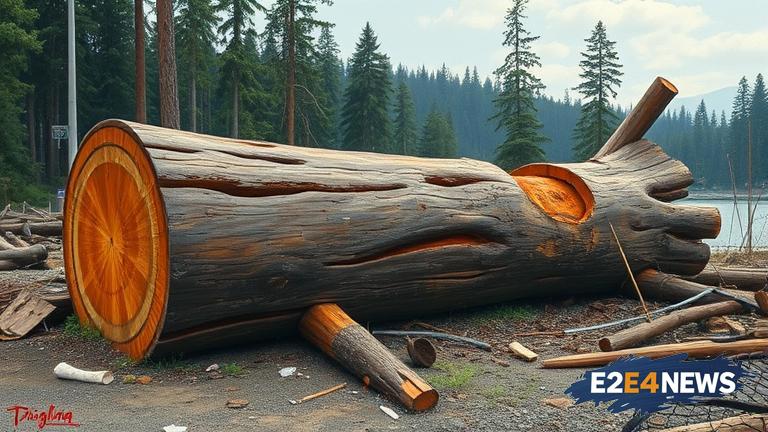The destruction of the iconic log in Stanley Park has sent shockwaves throughout the community, with many expressing their disappointment and sadness on social media. The log, which had become a popular spot for photos and a symbol of the park’s natural beauty, was removed by the Vancouver Park Board due to safety concerns. According to the park board, the log had become a hazard, with many visitors climbing on it and putting themselves at risk of injury. However, many are questioning the decision, arguing that the log was a beloved landmark and a part of the park’s history. The log had been a fixture in the park for decades, and its removal has left many feeling nostalgic and upset. Some have even started a petition to have the log replaced or restored, citing its cultural and historical significance. The park board has stated that they will be replacing the log with a new one, but many are skeptical, arguing that it will not be the same. The destruction of the log has also raised questions about the role of the park board and their decision-making process. Many are calling for greater transparency and community involvement in the decision-making process, arguing that the park board should have consulted with the community before making such a significant decision. The incident has also sparked a wider debate about the importance of preserving natural and cultural heritage sites. As one resident noted, ‘The log was a part of our city’s history and identity, and its removal is a loss for our community.’ Others have expressed concerns about the impact of the log’s removal on the park’s ecosystem, arguing that it could have unintended consequences for the environment. Despite the controversy, the park board has maintained that their decision was necessary to ensure public safety. However, many are still mourning the loss of the iconic log, and it remains to be seen how the community will come to terms with its removal. The incident has also highlighted the importance of community engagement and participation in decision-making processes, particularly when it comes to issues that affect the community’s cultural and natural heritage. In the coming weeks and months, it will be interesting to see how the community responds to the park board’s decision and whether they will be able to find a way to restore or replace the beloved log. The destruction of the log has also raised questions about the balance between preserving natural and cultural heritage sites and ensuring public safety. As the community continues to grapple with the loss of the iconic log, it is clear that this incident will have a lasting impact on the city and its residents.
